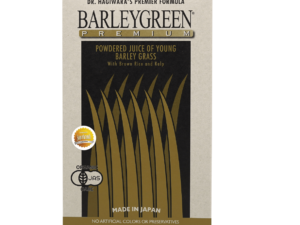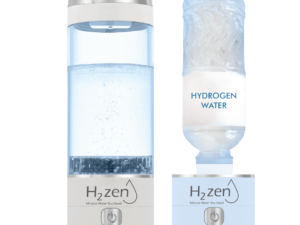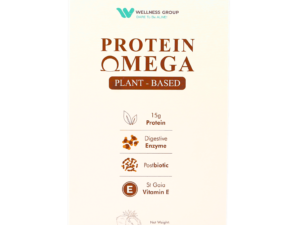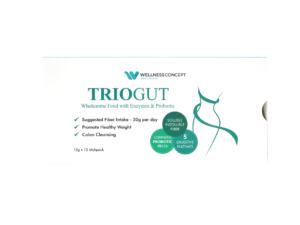In Malaysia’s health-conscious community, superfoods like green barley powder and wheatgrass have gained significant attention for their potential health benefits. A recent trend shows that Malaysians are increasingly incorporating these nutrient-dense foods into their diets to boost overall well-being.
Both green barley powder and wheatgrass are young grasses packed with antioxidants and nutrients, offering unique properties that cater to different health needs. As Malaysians become more aware of the importance of nutrition, the demand for these superfoods has risen, driven by their potential to enhance energy levels and support immune function.
Key Takeaways
- Comparison of nutritional profiles between green barley powder and wheatgrass
- Health benefits associated with each superfood
- Factors influencing the suitability of these superfoods for Malaysian consumers
- Practical advice on incorporating them into traditional Malaysian diets
- Understanding which superfood might be more beneficial based on individual health needs
Understanding Superfoods in the Malaysian Diet
The Malaysian health and wellness market has witnessed a remarkable shift towards green superfoods in recent years. As consumers become more aware of the importance of a healthy diet, the demand for nutrient-rich foods has increased significantly.
The Rise of Green Supplements

Click to 了解更多
Green supplements like barley grass and wheatgrass have gained popularity due to their numerous health benefits. These superfoods are rich in vitamins A, C, and E, and contain essential minerals like iron, magnesium, and calcium, making them a great addition to a Malaysian diet.
Why Malaysians Prefer Barley and Wheatgrass
Malaysians are turning to barley grass and wheatgrass for their potential to support overall health. The growing awareness of the importance of greens in the diet has led to an increased interest in these nutrient-dense foods. As a result, the market for green supplements is expected to continue growing.
As the trend towards healthier eating continues, understanding the role of superfoods like barley grass and wheatgrass in the Malaysian diet is crucial. These foods offer numerous benefits, from supporting energy production to enhancing overall well-being.
What is Green Barley Powder?
The young leaves of the barley plant, harvested and powdered, offer a wealth of nutritional benefits for Malaysians. Green barley powder is derived from the young leaves of the barley plant (Hordeum vulgare), harvested before the plant forms grain to maximize nutritional content.
Nutritional Profile of Barley Grass
Barley grass is rich in vitamins A, B1, B2, B6, B12, C, E, and K, and minerals like potassium, calcium, magnesium, iron, and various enzymes. It is known for its high content of SOD (superoxide dismutase), an enzyme with powerful antioxidant properties. Barley grass contains all essential amino acids, making it a complete protein source, particularly valuable for vegetarians and vegans in Malaysia.
How Barley Grass is Processed into Powder
The processing method significantly impacts the quality and nutritional value of the final barley powder product. Techniques such as flash-freezing and slow drying are used to preserve the nutritional integrity of barley grass. For Malaysian consumers, selecting high-quality barley powder involves looking for products that use these preservation methods.
By understanding the nutritional profile and processing methods of green barley powder, Malaysians can make informed decisions about incorporating this superfood into their diet.
What is Wheatgrass?
Wheatgrass is rich in chlorophyll, vitamins, and minerals, making it a powerful health supplement. It is the young grass of the wheat plant (Triticum aestivum), typically harvested 7-10 days after sprouting when its nutrient content reaches optimal levels.
Nutritional Composition of Wheatgrass
Wheatgrass contains significant amounts of chlorophyll, vitamins A, C, and E, iron, magnesium, calcium, and amino acids. It is particularly noted for its high chlorophyll content, which can help detoxify and boost the immune system. With over 90 minerals and 19 amino acids, wheatgrass is one of the most nutrient-dense foods available.
From Plant to Powder: Wheatgrass Processing
The processing of wheatgrass into powder involves several methods, including freeze-drying, dehydration, and cold-pressing techniques. These methods affect the bioavailability of nutrients and the overall efficacy of wheatgrass supplements. Understanding these processes is crucial for Malaysian consumers looking to maximize the health benefits of wheatgrass.
Wheatgrass has more protein than Barley Grass, with 28.0 g per 100 g compared to 22.1 g. It also has fewer carbohydrates than Barley Grass, with 4.9 g per 100 g compared to 8.0 g. This nutritional profile makes wheatgrass an attractive option for those seeking to enhance their dietary intake.
Nutritional Comparison: Green Barley Powder vs. Wheatgrass
Both green barley powder and wheatgrass are nutrient-dense supplements, but a closer look reveals distinct nutritional advantages. Understanding these differences is key to making an informed decision about which supplement best suits your dietary needs.
Vitamin and Mineral Content
The vitamin and mineral profiles of green barley powder and wheatgrass show some notable differences. Wheatgrass is particularly high in vitamins C and E, which are potent antioxidants that support skin health and immune function. On the other hand, barley grass is rich in vitamins K and B12, crucial for blood clotting, bone health, and red blood cell formation.
| Nutrient | Green Barley Powder | Wheatgrass |
|---|---|---|
| Vitamin C | Low | High |
| Vitamin K | High | Low |
| Zinc | Moderate | High |
| Potassium | High | Moderate |

Click to 了解更多
As shown in the table, wheatgrass is richer in zinc, supporting the immune system and wound healing, while barley grass is higher in potassium and phosphorus, essential for fluid balance, muscle contractions, and energy metabolism.
Protein, Fiber, and Antioxidant Profiles

Click to 了解更多
In terms of protein content, wheatgrass contains slightly more protein by weight compared to barley grass. Both, however, provide all essential amino acids, making them valuable for overall nutrition. The antioxidant properties of both supplements are impressive, with wheatgrass containing more superoxide dismutase (SOD) at 303,000 units per 100g compared to barley grass’s 146,000 units.
Antioxidant Comparison: Wheatgrass has a higher SOD content, while both are rich in chlorophyll and flavonoids, contributing to their antioxidant properties.
Health Benefits of Green Barley Powder
The health benefits of green barley powder are multifaceted, making it a sought-after supplement in Malaysia. Rich in essential nutrients, it offers a natural way to enhance overall health and address specific health concerns prevalent in the Malaysian population.
Digestive Health and Detoxification
Green barley powder supports digestive health through its high fiber content and natural enzymes, potentially alleviating common issues like constipation and indigestion. The chlorophyll in barley grass aids in detoxification by binding with toxins and facilitating their removal from the body, thus supporting liver health. For more information on how green barley grass powder can aid in weight loss, visit our detailed guide on green barley grass powder for weight.
Immune System Support
The rich nutrient profile of green barley powder strengthens the immune system, helping Malaysians combat tropical infections and seasonal illnesses. Its antioxidant properties further enhance immune function, providing comprehensive support against various pathogens.
Energy Levels and Oxidative Stress Reduction
Green barley powder can boost energy levels and reduce oxidative stress, addressing fatigue issues common in Malaysia’s hot climate and busy urban lifestyles. The antioxidant properties help mitigate oxidative stress, promoting overall well-being and vitality.
Health Benefits of Wheatgrass
Wheatgrass is a nutrient-dense superfood that offers various health benefits, especially for those living in Malaysia’s urban environments. With its rich nutritional profile, wheatgrass has become increasingly popular among health-conscious Malaysians looking to enhance their overall well-being.
Detoxification and Chlorophyll Benefits
Wheatgrass is renowned for its powerful detoxification properties, primarily due to its high chlorophyll content. Chlorophyll helps cleanse the blood, liver, and digestive system, making wheatgrass particularly beneficial for Malaysians living in urban areas where environmental pollutants are more prevalent. The detoxifying effects of wheatgrass can lead to improved overall health and a reduced risk of various diseases.
Immune Function Enhancement
The rich array of nutrients and enzymes in wheatgrass plays a crucial role in enhancing immune function. By supporting the immune system, wheatgrass helps Malaysians build resistance to common tropical illnesses and infections. Regular consumption of wheatgrass can potentially lead to better overall health and a reduced susceptibility to diseases.
Antioxidant Properties and Disease Prevention
Wheatgrass is also recognized for its exceptional antioxidant properties, which help combat oxidative stress in the body. Compounds like superoxide dismutase in wheatgrass work to neutralize free radicals, potentially reducing the risk of chronic diseases prevalent in Malaysia. Emerging research suggests that wheatgrass may have a role in preventing serious diseases, including its possible anti-cancer, anti-inflammatory, and blood sugar regulating properties.
Green Barley Powder vs. Wheatgrass: Which Is Best for Malaysians?
The decision between green barley powder and wheatgrass for Malaysians hinges on various local and health-related factors. Both supplements offer substantial health benefits, but their suitability can vary based on individual needs and environmental conditions.
Climate Considerations
Malaysia’s tropical climate and high humidity can affect the storage and stability of these supplements. Green barley powder is often more stable and less prone to degradation due to its processing methods, making it a more practical choice for the Malaysian climate. Wheatgrass, while beneficial, may require more careful storage to maintain its potency.
Dietary Preferences and Cultural Factors
Traditional Malaysian diets often feature a mix of rice, noodles, and various vegetables. Green barley powder can easily be incorporated into these dietary patterns due to its mild flavor, which can complement a variety of dishes. Wheatgrass, with its stronger taste, might be less appealing to some consumers. However, those accustomed to bitter tastes in their traditional foods might find wheatgrass more acceptable.
Availability and Pricing in Malaysian Market
The availability and pricing of these supplements in Malaysia can significantly influence consumer choice. For those looking for a cost-effective option, checking the best barley green powder in Malaysia can provide insights into affordable, high-quality products. Generally, green barley powder is more widely available and competitively priced compared to wheatgrass, making it a more accessible choice for many Malaysians.
In conclusion, while both green barley powder and wheatgrass offer health benefits, the best choice for Malaysians depends on individual health needs, dietary preferences, and practical considerations like climate and market availability. For many, green barley powder may be the more suitable option due to its stability, ease of incorporation into the diet, and cost-effectiveness.
How to Incorporate These Superfoods into Your Malaysian Diet
Green barley powder and wheatgrass are two superfoods that can easily be integrated into a Malaysian diet for enhanced health benefits. To make the most of these greens and powders, it’s essential to incorporate them into your daily meals in a way that’s both convenient and enjoyable.
Traditional Malaysian Recipes with a Superfood Twist
One of the best ways to consume green barley powder and wheatgrass is by incorporating them into traditional Malaysian dishes. For instance, you can add a spoonful of green barley powder to your nasi lemak or mix wheatgrass powder into the curry base for an extra nutritional boost. Even traditional kuih can be made healthier with the addition of these superfoods.
Simple Daily Consumption Methods
For those with busy lifestyles, there are simpler ways to consume these superfoods. You can mix green barley powder or wheatgrass into a quick energy-boosting smoothie, add it to your morning juice, or even take it as a supplement in capsule form. The key is to start with small amounts and gradually increase the dosage to avoid any digestive discomfort.
According to the Wellness Group nutritionists, the best way to introduce these grasses into your diet is gradually, ensuring your body can adjust and maximize the health benefits. With the right choice and method of consumption, you can significantly enhance your overall well-being.
Potential Side Effects and Precautions
Before adding green barley powder or wheatgrass to your daily routine, it’s vital to consider potential side effects and necessary precautions. While generally considered safe, some individuals may experience adverse reactions, particularly when consumed in large amounts.
Who Should Avoid These Supplements
Certain groups should exercise caution or avoid these supplements altogether. Pregnant or breastfeeding women, individuals with wheat or grass allergies, and those with underlying health conditions such as kidney disease should consult a healthcare provider before consumption. People on medications like blood thinners should also seek medical advice due to potential interactions.
Recommended Dosage for Malaysians
For Malaysians, a typical dosage ranges from 1 to 2 teaspoons per day, depending on individual health needs and tolerance. It’s advisable to start with a smaller dose and gradually increase to minimize potential side effects. Always consult with a healthcare professional to determine the best dosage for your specific needs.
Conclusion: Making the Right Choice for Your Health Needs
To make an informed decision between green barley powder and wheatgrass, it’s essential to consider individual health needs and objectives. Both superfoods offer exceptional nutritional value, but their unique benefits cater to different health goals.
Green barley powder is rich in vitamins and minerals, supporting overall health and energy levels. Wheatgrass, on the other hand, is renowned for its detoxification properties and immune system support. The choice between them depends on whether you prioritize digestive health, antioxidant intake, or immune function.
| 有机保健品 | Primary Benefits | Key Nutrients |
|---|---|---|
| Green Barley Powder | Overall health, energy levels | Vitamins, minerals, antioxidants |
| Wheatgrass | Detoxification, immune support | Chlorophyll, vitamins, antioxidants |
For many Malaysians, alternating between both supplements or using a combination product might provide the most comprehensive health benefits. We encourage you to consult with health professionals at Wellness Group (+60123822655) for personalized advice on incorporating these superfoods into your health regimen.
About Wellness Group: Your Partner in Health
With a team of qualified nutritionists and health experts, Wellness Group offers customized supplement recommendations for individual health needs. As Malaysia’s premier health and nutrition company, we are dedicated to providing high-quality superfoods and expert guidance to help Malaysians achieve optimal health naturally.
Our products, including green barley powder and wheatgrass supplements, are sourced to meet strict standards for purity, potency, and sustainability. We support overall health, boost the immune system, increase energy levels, and reduce oxidative stress. For personalized advice, contact us via WhatsApp at +60123822655.
Visit our stores during business hours (Monday-Friday 9:30 am-6:30 pm, Saturday 10 am-5 pm, closed Sunday) to explore our range of health-enhancing products.
FAQ
What are the key differences between Green Barley Powder and Wheatgrass?
The primary differences lie in their nutritional profiles, processing methods, and potential health benefits. Green Barley Powder is rich in superoxide dismutase, an enzyme that helps reduce oxidative stress, while Wheatgrass is high in chlorophyll, which aids in detoxification.
Can I consume both Green Barley Powder and Wheatgrass together?
Yes, you can consume both, but it’s essential to start with small amounts and monitor your body’s response. Combining them may enhance their individual benefits, such as boosting the immune system and increasing energy levels.
Are there any specific groups of people who should avoid these supplements?
Individuals with certain health conditions, such as celiac disease or gluten intolerance, should exercise caution when consuming Wheatgrass, as it may contain gluten. Pregnant or breastfeeding women should also consult their healthcare provider before adding these supplements to their diet.
How do I choose between Green Barley Powder and Wheatgrass for my dietary needs?
Consider your personal health goals, dietary preferences, and any sensitivities you may have. If you’re looking for a supplement rich in antioxidants and amino acids, Green Barley Powder might be the better choice. If you prefer a supplement high in chlorophyll and minerals like potassium and calcium, Wheatgrass could be more suitable.
What is the recommended dosage for these supplements in Malaysia?
The recommended dosage may vary depending on individual needs and product specifications. Generally, a daily dose of 1-2 teaspoons is recommended, but it’s crucial to follow the manufacturer’s guidelines and consult with a healthcare professional if necessary.
Can these supplements help with skin health?
Yes, both Green Barley Powder and Wheatgrass contain antioxidants and other nutrients that may help improve skin health by reducing oxidative stress and promoting overall well-being.






